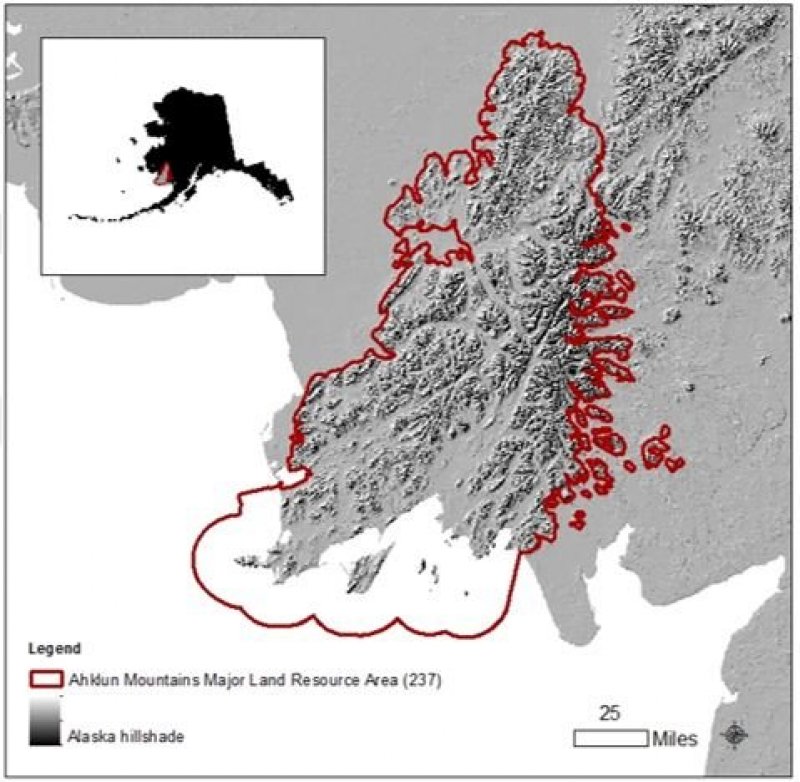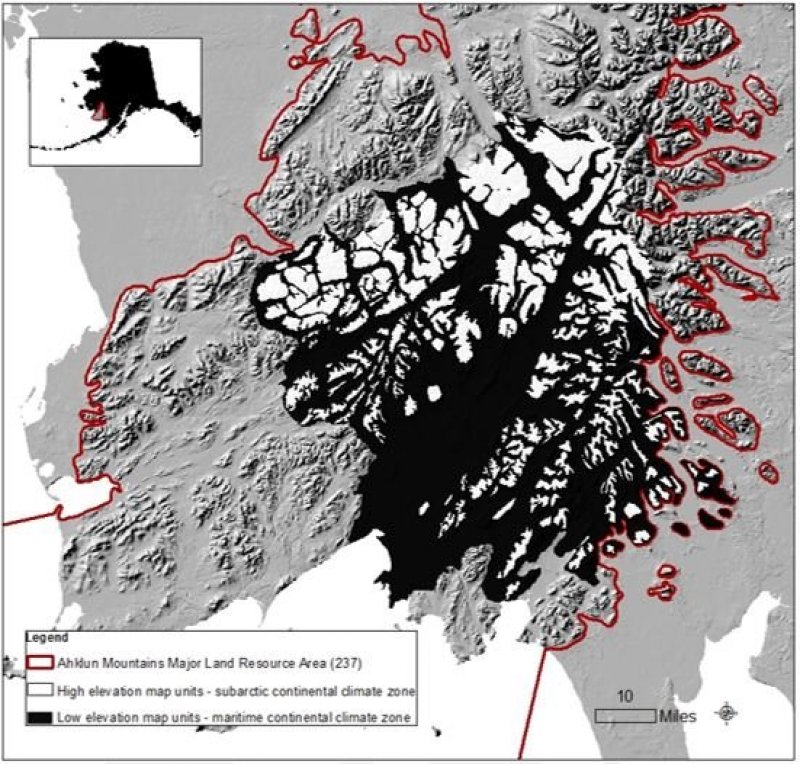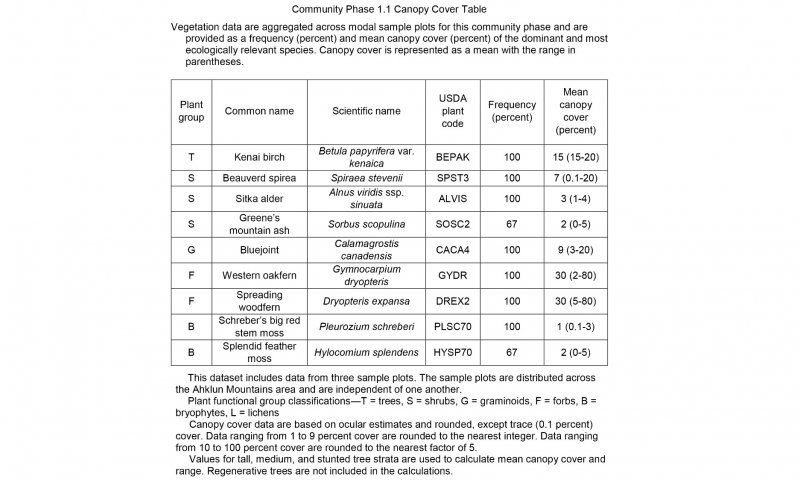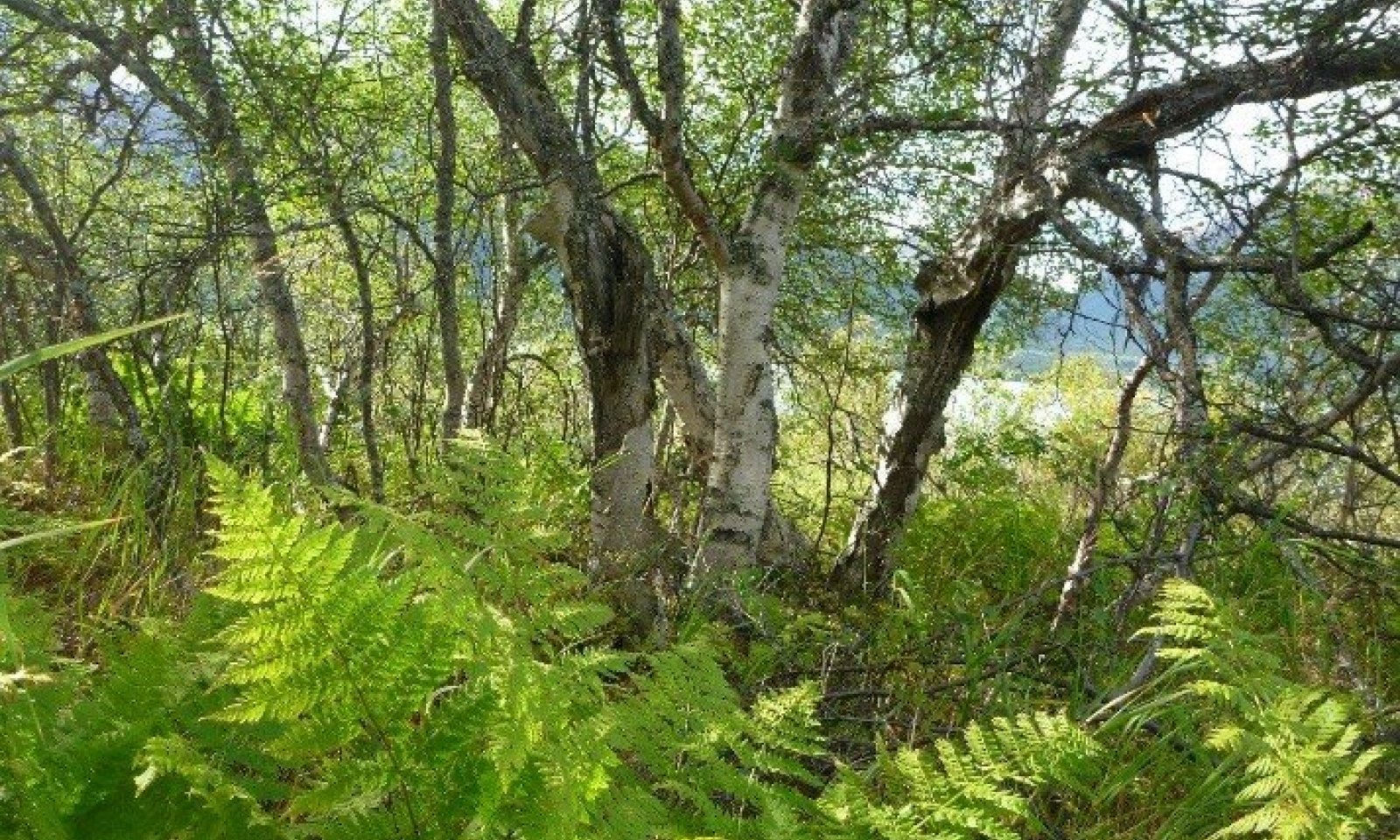

Natural Resources
Conservation Service
Ecological site F237XY221AK
Boreal Woodland Loamy Slopes
Last updated: 7/23/2020
Accessed: 12/21/2025
General information
Provisional. A provisional ecological site description has undergone quality control and quality assurance review. It contains a working state and transition model and enough information to identify the ecological site.
MLRA notes
Major Land Resource Area (MLRA): 237X–Ahklun Mountains
The Ahklun Mountains Major Land Resource Area (MLRA 237) is in western Alaska (fig. 2). This MLRA covers approximately 14,555 square miles, and it includes the mountains, hills, and valleys of the Kilbuck Mountains in the north and the Ahklun Mountains in the south. Except for the Kilbuck Mountains and the highest ridges of the Ahklun Mountains, the MLRA was extensively glaciated during the Pleistocene (Kautz et al., 2004). Today, a few small glaciers persist in mountainous cirques (Gallant et al., 1995). The present-day landscape and landforms reflect this glacial history; glacial moraines and glacial drift cover much of the area (USDA-NRCS, 2006). The landscape of the MLRA is primarily defined by low, steep, rugged mountains cut by narrow-to-broad valleys. Flood plains and terraces of varying sizes are common at the lower elevations in the valley bottoms. Glacially carved valleys host many lakes. Togiak Lake is one of the largest lakes in the region. It is 13 miles long and about 9,500 acres in size. Major rivers include the Goodnews, Togiak, Kanektok, Osviak, Eek, and Arolik Rivers. Where the Goodnews and Togiak Rivers reach the coast, the nearly level to rolling deltas support numerous small lakes.
This MLRA has two distinct climatic zones: subarctic continental and maritime continental (fig. 3). The high-elevation areas are in the subarctic continental zone. The mean annual precipitation is more than 75 inches, and the mean annual air temperature is below about 27 degrees F (-3 degrees C) in extreme locations. The warmer, drier areas at the lower elevations are in the maritime continental zone. The mean annual precipitation is 20 to 50 inches, and the mean annual air temperature is about 30 to 32 degrees F (-0.2 to 1.2 degrees C) (PRISM). This climatic zone is influenced by both maritime and continental factors. The temperatures in summer are moderated by the open waters of the Bering Sea, and the temperatures in winter are more continental due to the presence of ice in the sea (Western Regional Climate Center, 2017). The seasonal ice reaches its southernmost extent off the coast of Alaska in Bristol Bay (Alaska Climate Research Center, 2017). The western coast of Alaska is also influenced by high winds from strong storms and airmasses in the Interior Region of Alaska (Hartmann, 2002).
The Ahklun Mountains MLRA is principally undeveloped wilderness. Federally managed lands include the Togiak and Alaska Maritime National Wildlife Refuges. The MLRA is sparsely populated, but it has several communities, including Togiak, Manokotak, Twin Hills, and Goodnews Bay. Togiak is the largest village. It has a population of approximately 855, most of which are Yup’ik Alaska Natives (U.S. Census Bureau, 2016). Major land uses include subsistence activities (fishing, hunting, and gathering) and wildlife recreation (USDA-NRCS, 2006; Kautz et al., 2004).
Ecological site concept
Ecological site F237XY221AK is on mountain backslopes and footslopes and alluvial fans at the northern end of Togiak Lake. The site is in the eastern part of the Ahklun Mountains area, and it is susceptible to tree propagule pressure from neighboring MLRA 236 (Bristol Bay–Northern Alaska Peninsula Lowlands). The reference state supports one documented community phase.
The reference plant community is broadleaf woodland (Viereck et al., 1992) that consists of Kenai birch (Betula papyrifera var. kenaica) and a mixed understory of shrubs, graminoids, and forbs. The understory commonly includes dense ferns, bluejoint (Calamagrostis canadensis), and beauverd spirea (Spiraea stevenii).
Associated sites
| R237XY210AK |
Western Alaska Maritime Scrubland Gravelly Flood Plains Site F237XY221AK is on alluvial fans and lower backslopes and footslopes of mountains at the northern end of Togiak Lake. Other ecological sites that may be adjacent to or near site F237XY221AK include sites R237AK204AK, R237AK210AK, and F237AK239AK. Site F237XY221AK is differentiated from these other sites by landform, soils, disturbance regime, and vegetative communities. Ecotonal plant communities that have characteristics of each individual ecological site are in areas where these sites abut. |
|---|---|
| F237XY239AK |
Boreal Forest Loamy Slopes Site F237XY221AK is on alluvial fans and lower backslopes and footslopes of mountains at the northern end of Togiak Lake. Other ecological sites that may be adjacent to or near site F237XY221AK include sites R237AK204AK, R237AK210AK, and F237AK239AK. Site F237XY221AK is differentiated from these other sites by landform, soils, disturbance regime, and vegetative communities. Ecotonal plant communities that have characteristics of each individual ecological site are in areas where these sites abut. |
| R237XY204AK |
Western Alaska Maritime Scrubland Loamy Slopes Site F237XY221AK is on alluvial fans and lower backslopes and footslopes of mountains at the northern end of Togiak Lake. Other ecological sites that may be adjacent to or near site F237XY221AK include sites R237AK204AK, R237AK210AK, and F237AK239AK. Site F237XY221AK is differentiated from these other sites by landform, soils, disturbance regime, and vegetative communities. Ecotonal plant communities that have characteristics of each individual ecological site are in areas where these sites abut. |
Similar sites
| F237XY239AK |
Boreal Forest Loamy Slopes Site F237XY221AK is the only birch forest in the Ahklun Mountains area. Ecological site F237XY239AK supports a forested reference plant community, but the major tree species is balsam poplar (Populus balsamifera). |
|---|---|
| F237XY216AK |
Boreal Woodland Loamy Flood Plains Site F237XY221AK is the only birch forest in the Ahklun Mountains area. Ecological sites F237XY216AK supports a forested reference plant community, but the major tree species is balsam poplar (Populus balsamifera). |
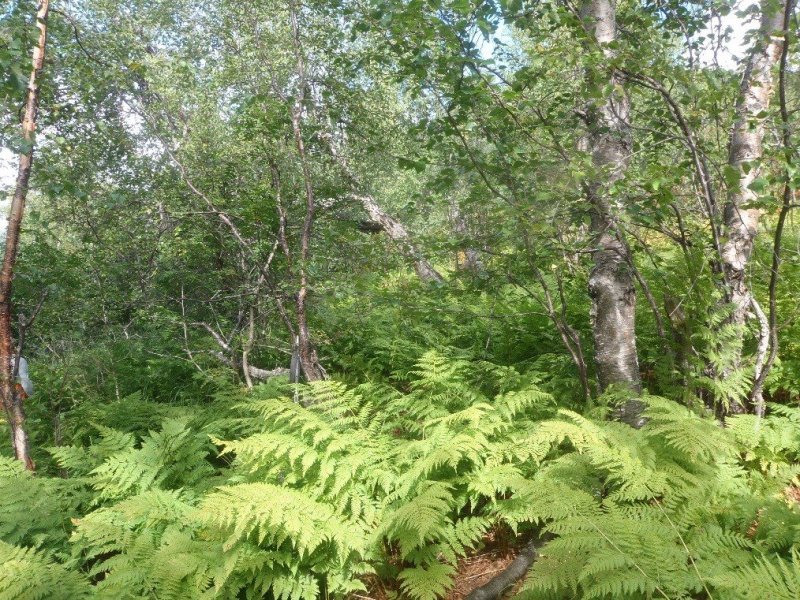
Figure 1. Understory communities in areas of Northspit soils (shown here) appear to be more productive than those in areas of Sundaycreek soils (fig. 5).
Table 1. Dominant plant species
| Tree |
(1) Betula papyrifera var. kenaica |
|---|---|
| Shrub |
(1) Spiraea stevenii |
| Herbaceous |
(1) Gymnocarpium dryopteris |
Click on box and path labels to scroll to the respective text.
